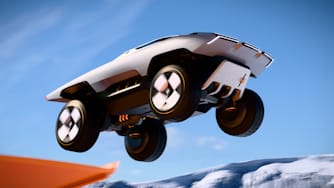Crafting miniature realism: Nico's journey into scale model photography
Nico Ongena, a dedicated scale model photographer from Belgium, has turned a unique hobby into an art form. By day, Nico works night shifts for Volvo Cars, but his true passion emerges in the afternoons, where he creates miniature worlds that look almost indistinguishable from reality.

Nico's journey into scale model photography began around five years ago, sparked by an unexpected inspiration. "I saw a little movie on Facebook from an American using small figures on the streets of Chicago," Nico recalls. This random encounter ignited a curiosity within him. Despite having no prior interest in photography or miniatures, Nico was intrigued. He bought some Hot Wheels cars and began experimenting, capturing images on his smartphone and editing them directly on his device.
Reflecting on those early days, Nico laughs, "If I look at that now, I think, how stupid was it? But it was a start." From these humble beginnings, Nico's skills evolved, driven by countless hours of watching tutorials on YouTube. He upgraded his equipment, moving from a smartphone to a better camera, and began mastering Photoshop and Lightroom. Nowadays, his Instagram account, a gallery of incredibly detailed scale model car photography, stands as a testament to his craftsmanship and creative vision.

The end result has to be as realistic as possible by using scale model cars
The art of miniature photography
For Nico, the essence of his work lies in achieving realism. "The end result has to be as realistic as possible by using scale model cars," he explains. His goal is to blend the diorama seamlessly with real environments, often opting for outdoor settings rather than studio shoots. "I always want to blend the diorama, the car, in the real environments."
Nico's approach involves meticulous planning and execution. He creates his miniature worlds from scratch, using materials like insulation plates for surfaces and static grasses for greenery. "I work a lot on isolation plates for the basics, and then I use different techniques to make the tarmac look as realistic as possible," he shares. The buildings, too, are crafted by hand, with each brick carved individually.
Nico draws inspiration from various sources, including real car photography. When tasked with recreating a specific car model, he researches extensively, collecting images that serve as references for his scenes. "Most of my inspiration is from real car pictures," he says. This dedication to authenticity ensures that his work resonates with realism and detail.
Collaborating with Polestar
One of Nico's most exciting projects came through a collaboration with Polestar. We invited Nico to recreate specific Polestar images using our scale models of our line-up. "It was the first time I had to recreate scenes," Nico recalls.
The project required a high level of precision and creativity. For the action shots, Nico used compressed air to create realistic dust effects. This presented a unique challenge, as the lightweight models often moved with the high-pressure bursts. "It took a lot of attempts, but finally, it was OK," he says, describing the intricate process of blending multiple shots in Photoshop to achieve the perfect final image.

Challenges and triumphs
Every shoot presents its own set of challenges. For Nico, the most time-consuming aspect is often crafting the dioramas. "The crafting does take a lot of time," he admits, but these elements can be reused in future projects, making the investment worthwhile. The editing process, particularly for action shots, also demands significant attention to detail, often involving blending multiple images to create a seamless final result.
One unique challenge Nico faces is finding suitable materials for these miniature environments. For instance, real sand is too coarse for the 1:43 Polestar scale models. Instead, he uses chinchilla sand, which is finer and more proportionate to the scale. �“The biggest problem was once I did the shot with the high-pressure burst, the model car was full of dust,” he notes, explaining the meticulous process of cleaning and photographing the models to achieve the perfect shot.
Having previously worked with 1:18 scale models, the 1:43 Polestar versions posed a challenge as he hadn’t worked with them since his earliest days of miniature photography. "The satisfaction of this project was maybe greater because now I know it works with the smaller-scale models," he reflects on the Polestar project.
His advice to aspiring photographers emphasises the importance of creativity over equipment. "It's more the creativity and the angles that you shoot that makes the object look realistic," he notes. This focus on artistic vision over technical specs is a cornerstone of Nico's approach.
As he continues to refine his craft, there is no doubt that Nico will keep creating miniature worlds that captivate the imagination and blur the lines between the real and the miniature.








